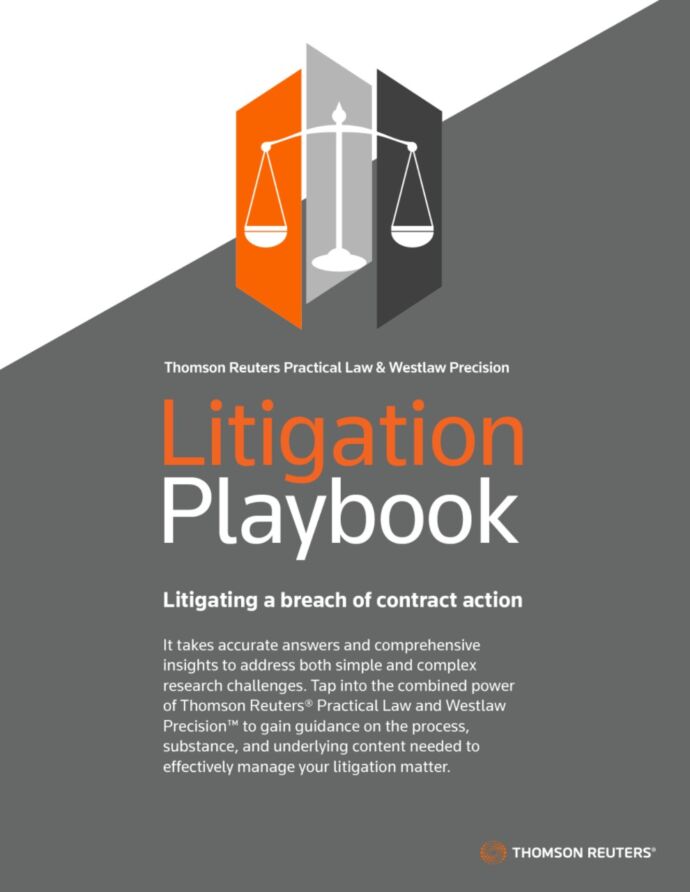There are a certain number of elements that must accrue in every cause of action that may arise in commercial litigation. You can use the infographic below to easily identify how many elements are required for the most common causes of action in commercial litigation.
Jump to:
What constitutes a cause of action?
What are the elements in each state?
Source: Practical Law’s Commercial Litigation: Causes of Action Checklist
What constitutes a cause of action?
In general, the elements required to constitute a cause of action are covered by statutes, administrative regulation, judicial precedent and the constitution.
Whether commercial or criminal, a dispute arises when there is a breach in the laws established by the state against an individual or society. The CoA is the epicenter from where the legal action is taken against the defendant for reinstating the plaintiff to their original position.
Take confidence in your claim by using a precision search tool for relevant cases based on cause of action, area of law, fact patter or other shared attributes.
What are the elements in each state?
It’s important, however, to consider that the remedies and definitions may differ from state to state. You can also drill down into the most common CoAs that may arise under certain states such as:
- California cause of action list and elements
- Florida cause of action list and elements
- Illinois cause of action list and elements
- Massachusetts cause of action list and elements
- New York cause of action list and elements
- Pennsylvania cause of action list and elements
- Texas cause of action list and elements
 | Playbook by Practical Law Litigating a breach of contract action: Assess breach of contract claims in an unfamiliar court and jurisdiction. |
20 general categories of CoA
The infographic above lists 30 of the most common causes of action in commercial litigation. That list can be further broken down into these 20 general categories:
- Where the plaintiff suffers injuries due to a breach or contradiction of law established by the state (for the maintenance of peace in the society).
- Where there is a breach in the contract terms and conditions.
- Where there is mala fide intent of the defendant while inducing the plaintiff into the legal obligations.
- Where the defendant fails to pay the promised amount to the plaintiff causing him damages.
- When the defendant owes a fiduciary relationship to the plaintiff and he violates that duty, the plaintiff suffers because of the part not performed by the defendant.
- Where the defendant does unfair dealing of the contract causing injury to the plaintiff by not allowing him to use the benefits he would have been availed if such unfair dealings were not sought by the defendant.
- Where the defendant misrepresents the material facts and pieces of information leading to loss to the plaintiff.
- When the major aspects of the oral agreement missing in the main document of the contract causing injury to the plaintiff and resulting in one of the common cause-of-action elements.
- The injury was caused to the plaintiff because he was not able to use his rightfully owned property due to the unauthorized acts of the defendant.
- Plaintiff suffers due to defamation done by the defendant.
- Where the defendant abstains from performing the specific performance as per the contract.
- Where the defendant breaches the confidentiality agreement done by the plaintiff, therefore causing injury to the latter.
- The intentional inclusion of a third party by the defendant which infringes on the rights of the plaintiff or abstains him from fully enjoying his contractual rights becomes the root CoA for a dispute.
- Plaintiff suffers due to interference of the defendant, as the defendant prevents or does something to resist the plaintiff from entering into the contractual obligations with the third party, resulting in a loss to the plaintiff.
- Defendant conceals vital information about the product, which causes damages to the plaintiff.
- Where the defendant enjoys an unfair advantage at the cost of the plaintiff, the latter suffers injury hence the CoA.
- Defendant makes a false statement against the plaintiff’s business or trade to a third person which formulates a bad opinion about the defendant’s trade or business, resulting in the loss to the plaintiff.
- Malicious prosecution is done by the defendant in order to involve the plaintiff in extra-legal affairs to take advantage of the plaintiff and cause harm to the organization he works in or for.
- When the defendant discloses the trade secrets which are essential for the Plaintiff’s business and are not available to the general public, the disclosure ultimately causes financial or some other type of damage to the plaintiff.
- The plaintiff suffers a loss due to false facts presented by the defendant; those facts were believed to be true by the defendant, but it is to be proved by the plaintiff that it was the defendant’s duty to get the facts correct.
Get a full checklist on commercial litigation causes of action and elements for more nuanced details and resources.








